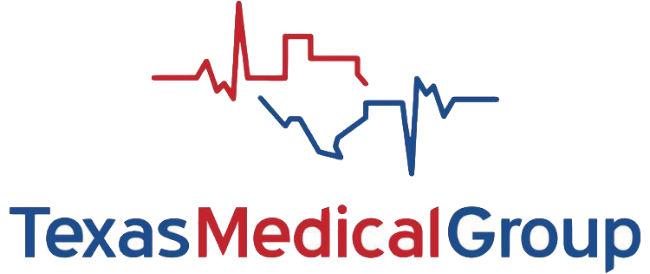
Green Practices in Health Care Facilities
Sustainability has become increasingly important for health care facilities. Faced with regulatory requirements, cost-saving opportunities and growing public expectations for environmental responsibility, health care facilities are pursuing green initiatives that align with operational efficiency and risk management goals.
This article explores key green practices that health care facilities can implement; the environmental, health and economic benefits such practices provide; and their insurance and risk management implications. It also provides actionable tips to help integrate sustainability effectively into operations.
Key Green Practices in Health Care Facilities
Health care facilities can adopt various strategies to implement green practices. Below are some of the most impactful:
- Adoption of green policies—Establishing organizational policies that prioritize eco-friendly practices, such as using sustainable materials and sourcing food and supplies locally, can help embed environmental consciousness across the organization.
- Improved energy efficiency—To reduce energy costs and environmental impact, health care facility employers can retrofit buildings with smart energy systems, enhanced insulation, efficient windows and LED lighting and install renewable energy equipment such as solar panels and wind turbines.
- Sustainable building design—Incorporating green building principles, such as those outlined by Leadership in Energy and Environmental Design (LEED) certification, helps facilities achieve sustainability goals. Examples include installing green roofs, leveraging natural lighting, and using materials with low or no volatile organic compounds (or VOCs) to improve indoor air quality.
- Waste reduction—Health care facilities can minimize both medical and nonmedical waste by implementing recycling programs, reducing single-use plastics and ensuring proper disposal of hazardous materials.
- Water conservation—Utilizing low-flow faucets, low-flush toilets, leak-detection systems and water reclamation technologies can significantly lower water utilization. Proper wastewater management is also critical to mitigate pathogen and pharmaceutical contamination.
Benefits of Green Practices in Health Care Facilities
There are several benefits of implementing green practices in health care facilities, including the following:
- Environmental benefits—By improving efficiency, reducing waste and adopting alternative energy sources, facilities can lower their carbon footprint, conserve resources and protect ecosystems.
- Health benefits—Enhanced air and water quality can improve patient and staff well-being. Green spaces incorporated into a facility’s design can also positively impact mental health and patient recovery.
- Economic benefits—Green initiatives often lead to cost savings through energy and water efficiency and waste reduction. They can also improve an organization’s reputation, helping to attract and retain staff and gain stakeholder trust. Insurance and Risk Management Implications. While green practices offer clear benefits, they have unique insurance and risk implications. Positive impacts include:
- Lower insurance premiums—Facilities that adopt energy-efficient systems or achieve LEED certification may qualify for lower rates due to reduced risk.
- Improved risk management—Green technologies, such as advanced energy systems with safety features, can mitigate risks like overheating, power surges and fires. Additionally, resilient infrastructure materials and design enhance preparedness for natural disasters.
However, green practices also come with challenges and risks, such as:
- Higher initial costs—The initial costs of green technologies can be high due to advanced materials and the necessary research and development. Insurers may charge higher premiums because of limited historical data, making risk assessment challenging. Furthermore, some green technologies require specialized insurance, which tends to be more expensive than standard coverage.
- Regulatory and liability risks—Compliance with environmental regulations can be complex and costly, requiring substantial investment in monitoring and reporting. Noncompliance can lead to hefty fines, reputational damage and higher insurance costs. Additionally, health care facilities using green technologies may encounter new liability risks, such as chemical leaks from lithium-ion batteries or electrical fires from solar panels.
- Operational disruptions—Retrofitting facilities with green technologies can temporarily disrupt operations, which may impact insurance coverage. Specialized maintenance requirements could also lead to downtime if not managed effectively.
Risk Management Practices for Green Health Care Facilities
To maximize the benefits of green initiatives and mitigate potential risks, health care facility managers should take the following steps:
- Conduct comprehensive risk assessments. Evaluate potential exposures associated with new materials, technologies or retrofitting processes. Regularly update assessments as technology and operations evolve.
- Engage stakeholders. Keep leadership, staff suppliers and other stakeholders informed and involved in green initiatives through regular communication, such as emails, newsletters and meetings.
- Provide training and education. Ensure staff understand how to use and maintain green technologies by offering regular training sessions and sharing updates on best practices.
- Audit progress and set goals. Track energy usage, waste reduction and other sustainability metrics. Use the data to identify areas for improvement and set measurable goals.
- Partner with risk and insurance experts. Collaborate with brokers and insurers to identify coverage needs, explore green endorsements, and understand how sustainability efforts impact premiums and claims.
Conclusion
Green initiatives can deliver substantial environmental, health and economic benefits while improving health care facilities’ operational and risk profiles. However, they also come with challenges, such as higher initial costs and new liability exposures. By partnering with risk management and insurance professionals, health care facilities can successfully implement sustainable practices while mitigating potential risks.
Contact us today for more information.
This Risk Insights is not intended to be exhaustive nor should any discussion or opinions be construed as legal advice. Readers should contact legal counsel or an insurance professional for appropriate advice. © 2024 Zywave, Inc. All rights reserved.

Discussion
There are no comments yet.